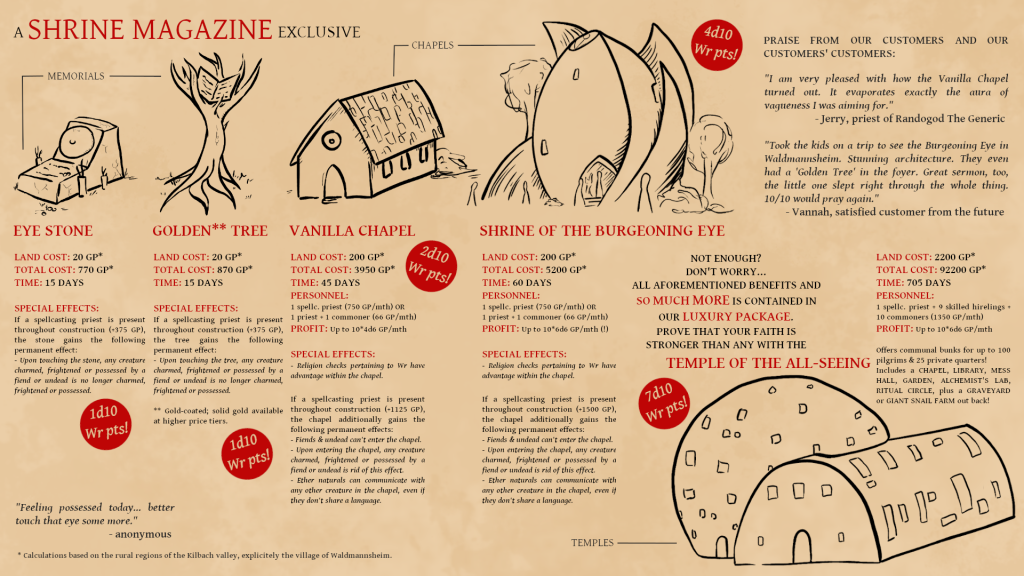One of my D&D parties recently came into quite a sum of money, prompting the paladin to ask me what building a chapel to his god might cost. I’d never gotten into stronghold building before, but I found a supplement that makes it surprisingly quick and easy.
I’m talking about Walrock Homebrew‘s “Fortresses, Temples, and Strongholds”. It’s not particularly new, seeing as it is a long-time best seller on DMsGuild, but it was to me, and I am highly pleased with how it manages to balance simplicity and richness of detail.
Here’s How It Works
It has you pick a base structure with a fixed construction cost and time, square footage (which is a multiplier for land cost, which you define based on your region), required personnel and maintenance cost, along with other details. A structure also has a number of “room points” that you can use to fit predefined rooms of different point costs into it.
Each room adds onto construction cost and time, and optionally personnel and maintenance cost. Some rooms, e.g. chapels or banks, provide an income or other special effects.
And there are more modular options you can patch on in much the same manner; e.g. secret passages, portals, wards and traps. You can even hire more or less specialized personnel, invite merchants, throw parties and charge road toll.
It goes deep, but it doesn’t drag you down there forcibly.
Here’s What I Made
Due to the simplicity of the supplement, I was able to make time for some art. Behold:

The chapels and the temple are pretty much a straightforward manifestation of the rules from the supplement. They don’t offer anything as small as the memorials though, so I had to scale things down a bit for that.*
You might wonder what “ether naturals” or “Wr points” are, and I might explain that in future posts; for now, to close this off, let me just give you some context on my choice of designs. The paladin’s god is Wr, The Seeing, God of Ether (true neutral, domains of knowledge and nature). That alone should explain the eyes (not boobs) and windows, and the book in the tree.
The plant imagery, especially that of the opening bud, is rooted (badum-ts) more deeply in the lore of the pantheon; partly, it represents the potential inherent in knowledge, partly it’s a vanitas symbol (i.e. a sign of the acceptance of the transience of life).
Honestly, I’m really proud of that shrine design.
* Looking at the final numbers, they feel right, but I know I couldn’t just have intuited them. Plus, knowing that they’re based on a finely balanced system is in itself satisfying to me.